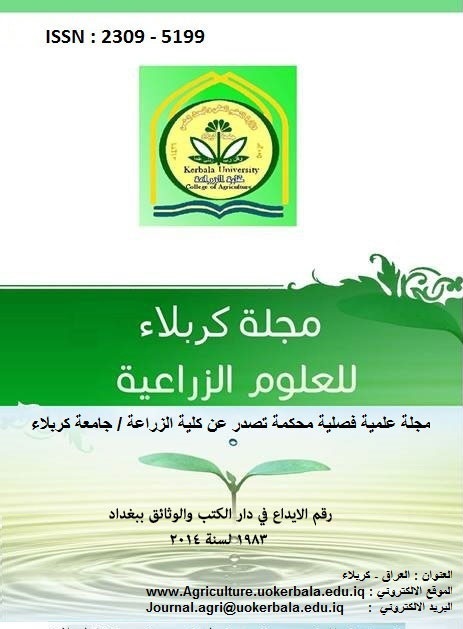Isolation and diagnosis of the pathogens causing seed decay and damping-off disease on wheat and control them using some biological and chemical factors
DOI:
https://doi.org/10.59658/jkas.v4i1.88Abstract
This study was conducted to isolate and identify the causal agents of seed decay and damping-off disease on wheat. Additionally, the biological factor Bacillus thurigensis (BT), the chemical induction factor BION (BI) and the extract of sea algae (MU) were evaluated in control of this disease. After isolation process, the cultural features of the fungal isolates were investigated and their pathogenicity was assessed. The PCR technique was operated also to study the most pathogenic fungal isolates. Subsequently, the efficiency of the above three factors were evaluated in control of the disease in the plastic house. The results showed that the pathogens of this disease were belonging to two fungal genus Rhizoctonia and Fusarium. As well as, all fungal isolates were highly pathogenic. Pure DNA with enough quantity was extracted from these fungal isolates in order to conduct a PCR reaction after manipulating of the DNA extraction process. The results displayed also good inhibition ability of the BT against all pathogenic fungal isolates with inhibition percentage ranged between 68.05-87.21%. Additionally, the biological and chemical factors selected in this study proved their efficiency in controlling of this disease particularly when they were applied in integrated method. F1+BI+MU+BT and R1+BI +MU+BT treatments caused the highest percentage of seed germination reached 100% and 93.33% in addition to the lowest percentages of seed decay and damping-off 0% in both of them and disease severity 17% and 19.33% respectively. Furthermore, the growth characteristics of wheat plants were significantly improved comparing with the Benlet fungicide treatment in plastic house experiment. The data of this study may indicate to possibility of applying these three factors together to control the seed decay and damping-off disease and possibility preserving of the environment simultaneously.
Downloads
Published
How to Cite
Issue
Section
License
Copyright (c) 2017 Copyright (c) 2024 is the Author's article. Published by the Journal of Kerbala for Agricultural Sciences under a CC BY 4.0 license

This work is licensed under a Creative Commons Attribution 4.0 International License.
Licensing Terms
All articles are published under a Creative Commons License and will be directed to the Creative Commons Attribution 4.0 International License (CC BY 4.0) That permits use, distribution, and reproduction in any medium, provided the original work is properly cited. This license also allows the work to be used for commercial purposes.
Use by both non-commercial and commercial users
This content is licensed under a Creative Commons Attribution 4.0 International (CC BY 4.0) license, permitting use by both non-commercial and commercial users. Individual users may access, download, copy, display, and redistribute the articles to colleagues, as well as adapt, translate, and text- and data-mine the content, subject to the following conditions:
- The author's moral rights, including the right of attribution and the right to protect their work from derogatory treatment, are respected.
- Where content in the article is identified as belonging to a third party, users must ensure that any reuse complies with the copyright policies of the owner of that content.
- If the article content is reused for research or educational purposes, users should maintain a link to the appropriate bibliographic citation, including the DOI and a link to the published version on the journal's website.

